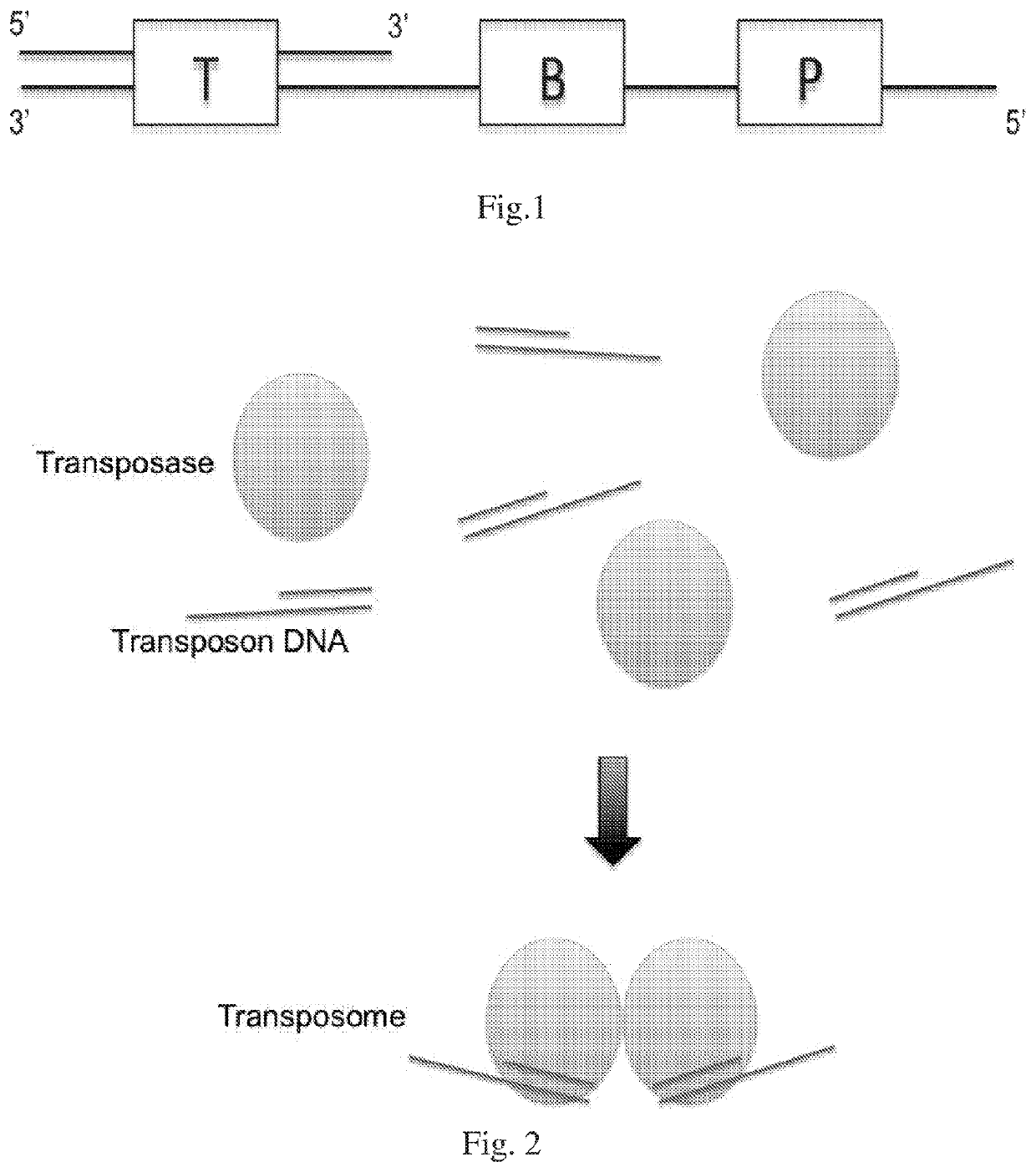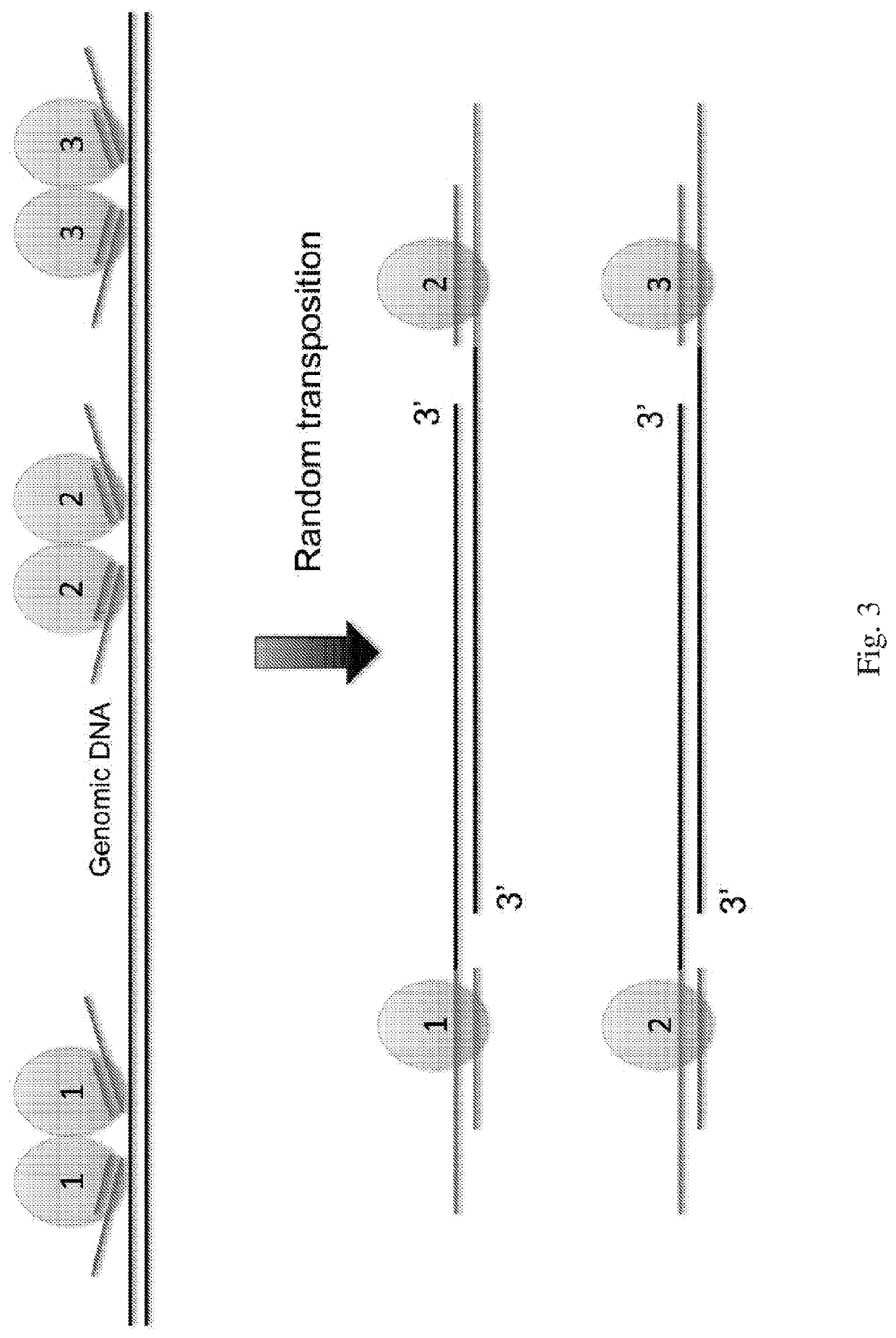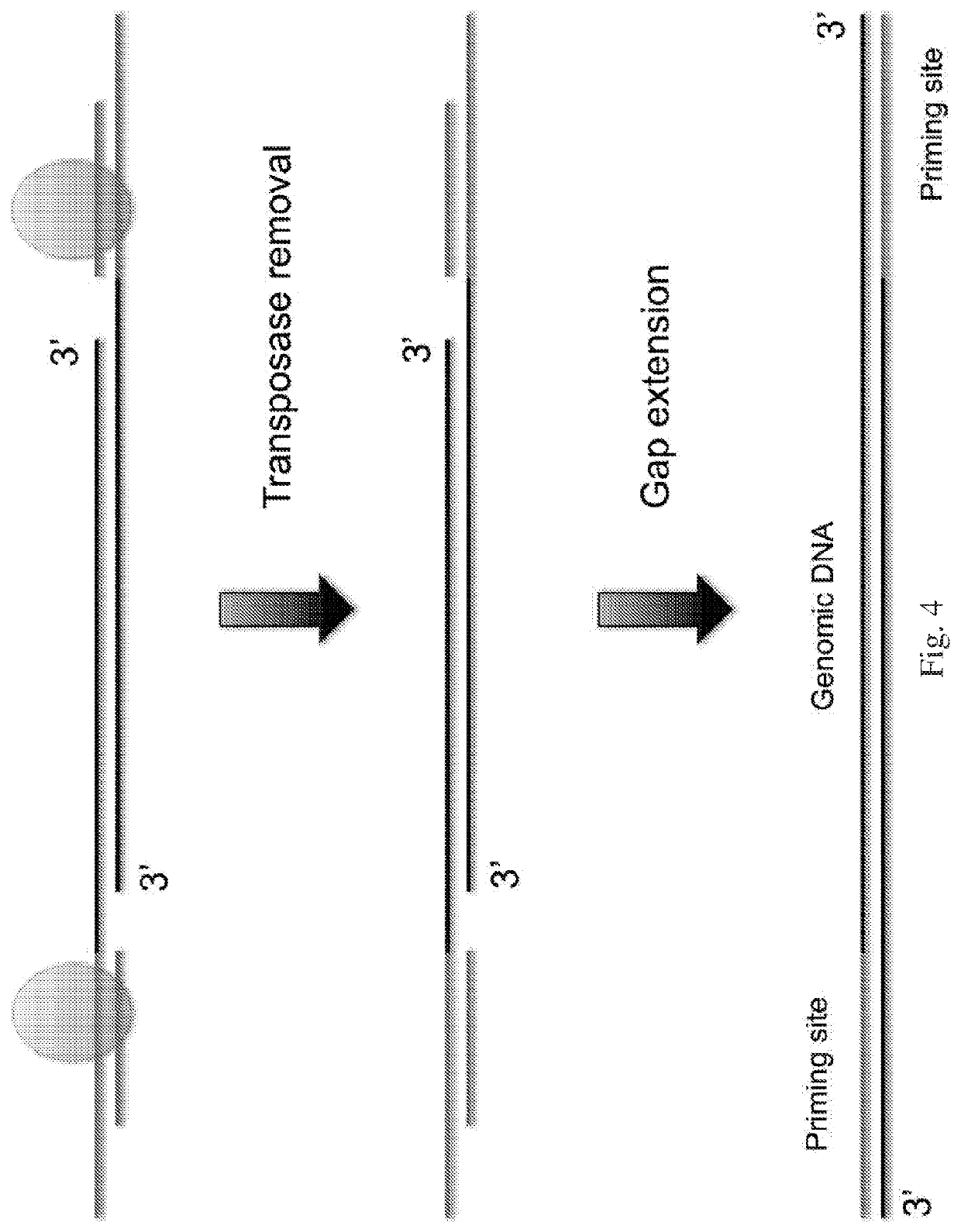Methods of Whole Genome Digital Amplification
a technology of whole genome and amplification, applied in the field of methods and compositions for amplifying trace amount of dna, can solve problems such as false negatives, and achieve the effects of reducing amplification bias, high fidelity, and high whole genome coverag
- Summary
- Abstract
- Description
- Claims
- Application Information
AI Technical Summary
Benefits of technology
Problems solved by technology
Method used
Image
Examples
example i
General Protocol
[0093]The following general protocol is useful for whole genome amplification. A single cell is lysed in lysis buffer. Transposome is formed by incubating equal molar of transposon DNA and Tn5 transposase at room temperature for 1 hour. The transposome and transposition buffer are added to the cell lysis which is mixed well and is incubated at 55° C. for 10 minutes. 1 mg / ml protease is added after the tranposition to remove the transpoase from binding to the single cell genomic DNA. Deep vent (exo-) DNA Polymerase (New England Biolabs), dNTP, PCR reaction buffer and primers are added to the reaction mixture which is heated to 72° C. for 10 min to fill in the gap generated from the transposon insertion. The reaction mixture is loaded to the microfluidic device to form micro droplets. The droplets containing single cell genomic DNA template, DNA polymerase, dNTP, reaction buffer and primer are collected into PCR tubes. 40 to 60 cycles of PCR reaction are performed to a...
example ii
Combining Transposase with Transposon DNA
[0094]Tn5 transposase (Epicentre) is mixed with transposon DNA in equal molar number in a buffer containing EDTA and incubated at room temperature for 10-60 minutes. The final transposome concentration is 0.1-10 μM. The transposon DNA construct has a double stranded 19 bp transposase binding site on one end, and a priming site on the other end. The single stranded priming site forms a 5′ protruding end. Barcode sequences with variable length and sequence complexity could be designed as needed between the 19 bp binding site and the priming site. The transposome may be diluted by many folds in 50% Tris-EDTA and 50% glycerol solution and preserved at −20° C.
example iii
[0095]A cell is selected, cut from a culture dish, and dispensed in a tube using a laser dissection microscope (LMD-6500, Leica) as follows. The cells are plated onto a membrane-coated culture dish and observed using bright field microscopy with a 10× objective (Leica). A UV laser is then used to cut the membrane around an individually selected cell such that it falls into the cap of a PCR tube. The tube is briefly centrifuged to bring the cell down to the bottom of the tube. 3-5 μl lysis buffer (30 mM Tris-Cl PH 7.8, 2 mM EDTA, 20 mM KCl, 0.2% Triton X-100, 500 μg / ml Qiagen Protease) is added to the side of the PCR tube and span down. The captured cell is then thermally lysed using the using following temperature schedule on PCR machine: 50° C. 3 hours, 75° C. 30 minutes. Alternatively, mouth pipette a single cell into a low salt lysis buffer containing EDTA and protease such as QIAGEN protease (QIAGEN) at a concentration of 10-5000 μg / mL. The incubation condition varies ...
PUM
| Property | Measurement | Unit |
|---|---|---|
| Temperature | aaaaa | aaaaa |
| Temperature | aaaaa | aaaaa |
| Temperature | aaaaa | aaaaa |
Abstract
Description
Claims
Application Information
 Login to View More
Login to View More - R&D
- Intellectual Property
- Life Sciences
- Materials
- Tech Scout
- Unparalleled Data Quality
- Higher Quality Content
- 60% Fewer Hallucinations
Browse by: Latest US Patents, China's latest patents, Technical Efficacy Thesaurus, Application Domain, Technology Topic, Popular Technical Reports.
© 2025 PatSnap. All rights reserved.Legal|Privacy policy|Modern Slavery Act Transparency Statement|Sitemap|About US| Contact US: help@patsnap.com



